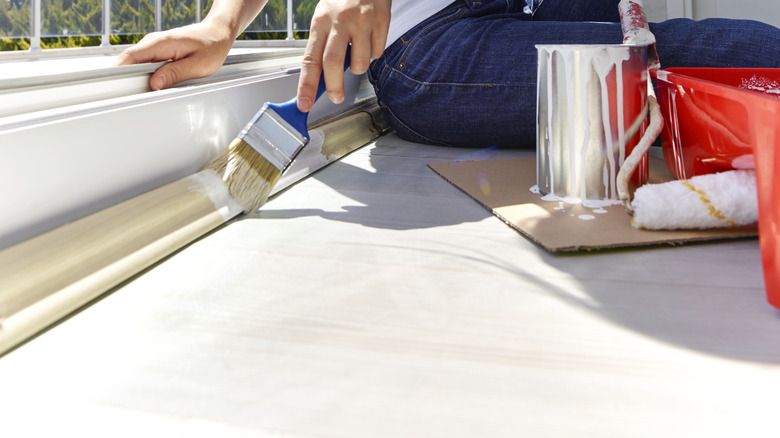Touching Up Baseboard Paint With Carpeting Just Got So Much Easier With This Handy Hack
We may receive a commission on purchases made from links.
Touching up the paint on your baseboards shouldn't be too much of a hassle. On the contrary, it sounds like a relatively quick chore you could finish over the course of a few hours at most. Unfortunately, many of us overlook the fact that baseboards should be removed from the wall before being painted, repainted, or stained, so as not to drip anything on the flooring. However, there is an easy solution: A simple roll of masking tape can allow you to touch up the paint on your baseboards without having to take them down at all, even if the floor is wall-to-wall carpeting.
Painting near carpet flooring is generally avoided not only because paint can permanently ruin carpets – or at least be incredibly hard to fully remove from the fibers — but because the carpet fuzz itself often gets brushed up against in the course of your project and winds up caught in the painted surface, ruining that as well. If you are going to paint next to a carpeted surface, be extremely cautious with your materials and your movements to ensure the paint only goes where you want it.
How to paint baseboards next to carpet
Even though you'll be painting the baseboards as they are attached to the wall, you still have the whole floor to lay out your materials, so don't feel you need to crowd your paint can or tray too closely to where you'll be working. Lay out some newspapers or a tarp 12-18 inches away from your project area and use that for staging. Next, take your roll of heavy duty masking tape and roll it out right against the edge of the wall, with approximately 3mm standing up against the wall. Take a scraper or other thin straight edge, and push that 3mm tape edge down into the crevice between the carpet and the wall, creating a sort of lip or barrier between the two.
Once that barrier is in place, use a thin, angled handheld brush to repaint your baseboards, allowing that angled tip to slide between the tape and the wall, completely covering the surface without either paint getting on the carpet or carpet lint getting into the paint. Make sure you've applied as many coats as necessary and your paint is completely dry before removing the masking tape, but once you do, your baseboard should feature a clean, fresh edge with zero transfer between the paint and the carpet. Be sure to clean or properly discard your materials as appropriate after you're finished.
